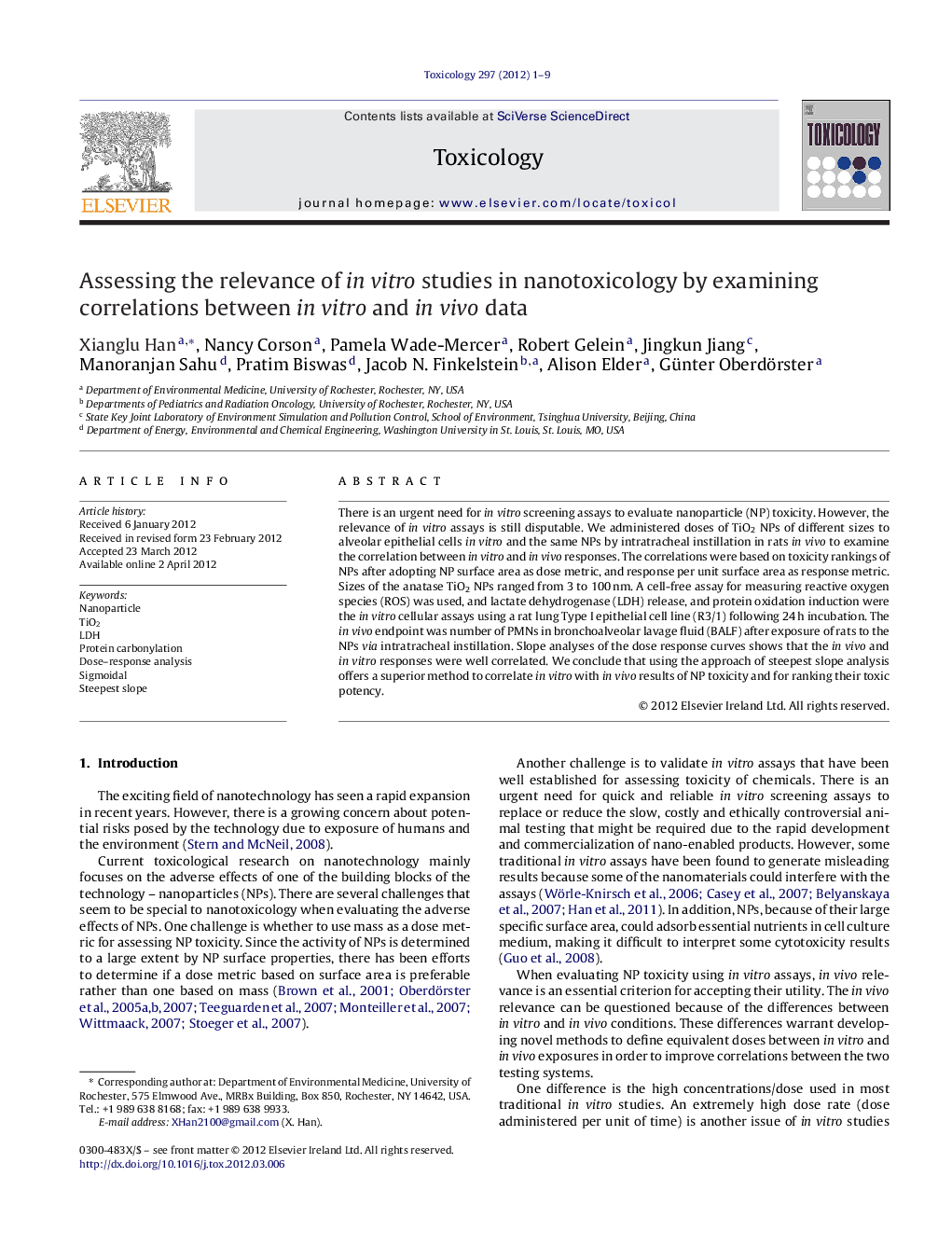| Article ID | Journal | Published Year | Pages | File Type |
|---|---|---|---|---|
| 2595919 | Toxicology | 2012 | 9 Pages |
There is an urgent need for in vitro screening assays to evaluate nanoparticle (NP) toxicity. However, the relevance of in vitro assays is still disputable. We administered doses of TiO2 NPs of different sizes to alveolar epithelial cells in vitro and the same NPs by intratracheal instillation in rats in vivo to examine the correlation between in vitro and in vivo responses. The correlations were based on toxicity rankings of NPs after adopting NP surface area as dose metric, and response per unit surface area as response metric. Sizes of the anatase TiO2 NPs ranged from 3 to 100 nm. A cell-free assay for measuring reactive oxygen species (ROS) was used, and lactate dehydrogenase (LDH) release, and protein oxidation induction were the in vitro cellular assays using a rat lung Type I epithelial cell line (R3/1) following 24 h incubation. The in vivo endpoint was number of PMNs in bronchoalveolar lavage fluid (BALF) after exposure of rats to the NPs via intratracheal instillation. Slope analyses of the dose response curves shows that the in vivo and in vitro responses were well correlated. We conclude that using the approach of steepest slope analysis offers a superior method to correlate in vitro with in vivo results of NP toxicity and for ranking their toxic potency.
